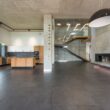Artificial turf comes in a wide variety of prices. Choosing the right turf for your needs and budget will help you avoid costly mistakes.
The primary backing is the durable material that grass fibers are stitched to. The secondary backing is a coating that locks the tufts permanently in place.
Price per square foot
The price of artificial turf depends on how much work needs to be done to prepare the site and what type of material you want to use. For example, a fake lawn with a heavy-duty backing and a blend of blades in greens and yellows will be more expensive than one made from plastic. In addition, the type of soil used also affects the cost. In general, prices of artificial grass can range from $5 to $20 per square foot.
A professional installation of artificial grass can cost up to $10,000 for a 500-square-foot lawn. However, you may save money by installing it yourself if you have the proper tools. The best time to install artificial turf is during the winter, when many contractors are less busy and can offer you lower prices.
Usually, the price of artificial grass starts at $2 per square foot for polypropylene or $6 for nylon varieties. This is a good option for homeowners who don’t want to spend too much on maintenance and want their lawns to last for as long as possible. The price of synthetic grass can go up to $10 per square foot if you choose to add more features like infill, weed barrier, and a wire mesh.
Before artificial turf is installed, the yard must be cleaned. This can be done by a landscaper or the homeowner. Basic yard cleanup costs about $200 to $500, depending on the extent of the work needed. Other services that increase the cost of yard cleaning include tree pruning, debris removal, and weeding.
In most cases, a weed barrier is required to keep weeds from growing under the turf. It is an effective way to prevent weeds and keeps the grass looking nice. The weed barrier will need to be placed under the road base. The road base is a layer of crushed rock that helps the soil stay stable and dry. The road base can range in price from $0.50 to $2 per square foot, with Class II being more expensive than CMB.
Bender boards are often installed around the edge of artificial grass to separate it from other types of landscaping. The cost of bender boards is about $35 each. If you have existing edging, bender boards aren’t necessary, but they are a must for areas that are sloped or have curved edges.
Installation cost
There are several factors that affect the installation cost of quality artificial turf. These include the type of turf and what additional materials are needed for the job. Some of these materials include weed barrier fabric, a foam pad, infill, and a deodorizer. Other materials may be required for certain projects, such as a concrete or paver base. It is important to consider these additional costs when estimating the total project cost.
Infill is a vital part of synthetic turf that absorbs and distributes water and other nutrients. It can also help prevent moss and other weeds from growing in the yard. It is typically made from a mixture of sand and crushed rock and can be purchased from a local landscaping supply store. The cost of infill can vary depending on the brand and style, but it is usually less than $2 per square foot.
A weed barrier is another necessary item that can be installed with the synthetic grass to protect it from invasive plants. It can be purchased at a local landscape supply store and can be applied with a garden hose to spray down the area. This can be a time-consuming task and requires careful attention to detail, but it is an important part of maintaining the integrity of the lawn.
Lawn size can also impact the artificial turf installation cost. A larger lawn costs more to install because the installers must cover more material. In addition, a complex lawn with a pool, gazebo, or other structures will add to the overall cost of the job.
The blade shape of the turf can also affect the installation cost. Different blade shapes are designed for specific purposes and offer different performance characteristics. For example, straight-blade turf is less expensive than specialized blades because it has a simpler manufacturing process and is more affordable to produce.
Adding mulch will improve the appearance of the lawn and reduce weed growth. It can be purchased from a local landscape supply store and ranges in price from $50 to $155 per cubic yard. Mulch is a great way to finish off the look of a yard and can be used with or without a synthetic lawn.
Maintenance cost
Unlike natural grass lawns, which require constant attention and a considerable upfront investment, artificial turf has very little ongoing maintenance costs. In fact, a quality artificial lawn will pay for itself in just a few years. In addition, you can save a lot of money on water bills by switching to a smart sprinkler controller. These are available for purchase online and can save you $430 a year in water usage, on average.
The initial cost of a synthetic turf lawn varies widely depending on the type of materials and installation. The most expensive types of artificial turf are those that look most like natural grass and have a higher level of durability. Other important factors to consider include infill and labor costs. The cost of infill can vary greatly, but it is typically a one-time expense during the installation process. There are several different types of infill, including crumb rubber, silica sand, and coated sand. These are used to maintain a good surface texture and support the weight of the artificial turf. Some of these infills also have special features, such as odorizers and deodorizers for pets or sports fields, and shock pads to reduce the impact of high-impact activities.
Labor prices for synthetic turf installation can add up quickly, especially if you have a large project or are installing on a slope. You will need to pay for site preparation, if necessary, as well as labor for the actual installation. Additional landscaping features can also increase your budget, such as retaining walls and decorative or hidden edging. You may also want to plant shrubs and flowers around your synthetic turf yard.
While it can be expensive to install a synthetic turf lawn, the long-term savings make it a worthwhile investment for most homeowners. Compared to the cost of maintaining a natural grass lawn, you’ll be saving money on mowing, watering, and fertilizer. In addition, your home will be more environmentally friendly. It will be free of weeds, pests, and insects, which can make outdoor living more enjoyable. Lastly, synthetic turf is easy to keep clean, and most options are allergy-friendly.
Warranty

Artificial turf is a big investment, and you should protect it with a strong warranty. Warranties can save homeowners from unexpected repair costs and ensure that the product is a good fit for their home. However, not all warranties are created equal, and it is important to understand what each warranty covers before you sign.
A quality synthetic lawn will typically come with a manufacturer’s warranty, which will cover the product for its expected lifespan. The duration of a warranty indicates the product’s durability and quality, so it is essential to select the right one for your needs. The longer the warranty, the more confidence you can have in your purchase.
Typically, premium synthetic turf products will have warranties that range from 8 to 15 years. Some may even have a lifetime warranty. These warranties will typically cover material defects, installation issues, and UV protection. The warranties will also include a replacement or credit based on proration over time. Some warranty companies have stipulations that will exclude certain types of damage, such as calcium build-up and dew.
Some of the most common warranty issues that customers have to deal with are seam problems and visual lines. These are typically caused by uneven infill distribution or poor installation techniques. These problems can be resolved by adding infill material to low spots and brushing it in. However, these visual lines can detract from the lawn’s aesthetic and require professional repair or replacement under warranty.
Another common issue is heat damage, which can occur from prolonged exposure to direct sunlight. Ideally, the synthetic turf should be protected by shading or a reflective surface. However, if these are not feasible, the warranty will not cover any magnification or heat damage to the turf.
Most reputable manufacturers offer a variety of different warranty options. For example, Global Syn Turf offers a 5-year labor and materials warranty that includes repairs to faulty seams and infill. They also provide a 30-day money-back guarantee. Additionally, they offer a ZEOLITE infill option that eliminates pet waste smells and reduces water damage. This infill is also available in a granular version for improved drainage.










